The arrival of more F-35B jets means the UK now has 34 of the stealth jets.
With one aircraft lost in an accident and four test jets in the US, there are now 30 of the type in operational service in the UK.
There is an expectation that all of the 47 in the first batch will be delivered by the end of 2025. Note that it would have been 48 if one didn’t crash.
After that, the Ministry of Defence expressed the intention to purchase another tranche of jets.
Funding has been delegated for an additional tranche of F-35B jets for Britain beyond the 48 already ordered.
Jeremy Quin, then Minister of State at the Ministry of Defence, stated last year:
“Funding for a second tranche of F-35 Lightning has been delegated to Air Command as part of our recent annual budget cycle. Funding for Atlas A400M which not yet been delegated. A decision on future tranches of F-35B will be made in due course.”
For more on the planned additional A400M purchase see here, now, on to the F-35B.
“As you know, we are going to acquire 48. We have made it absolutely clear that we will be acquiring more. We have committed to have 48 in service by 2025, and we will be acquiring more. We have set that out in the IR. We will set out the exact numbers in 2025. The 138 number is still there. That is a defined number and we are looking at keeping these aircraft carriers in operation for a very long period of time. I am not dismissing that number either. We know that we have 48 to which we are committed, and we know that we will buy more beyond that.”
How many are expected?
According to the Defence Command Paper titled ‘Defence in a Competitive Age’, the UK intends to increase the fleet size beyond the 48 F-35 aircraft it has already ordered.
“The Royal Air Force will continue to grow its Combat Air capacity over the next few years as we fully establish all seven operational Typhoon Squadrons and grow the Lightning II Force, increasing the fleet size beyond the 48 aircraft that we have already ordered. Together they will provide a formidable capability, which will be continually upgraded to meet the threat, exploit multi domain integration and expand utility.
The Royal Air Force will spiral develop Typhoon capability, integrate new weapons such as the UK developed ‘SPEAR Cap 3’ precision air launched weapon and invest in the Radar 2 programme to give it a powerful electronically scanned array radar. We will integrate more UK weapons onto Lightning II and invest to ensure that its software and capability are updated alongside the rest of the global F 35 fleet.”


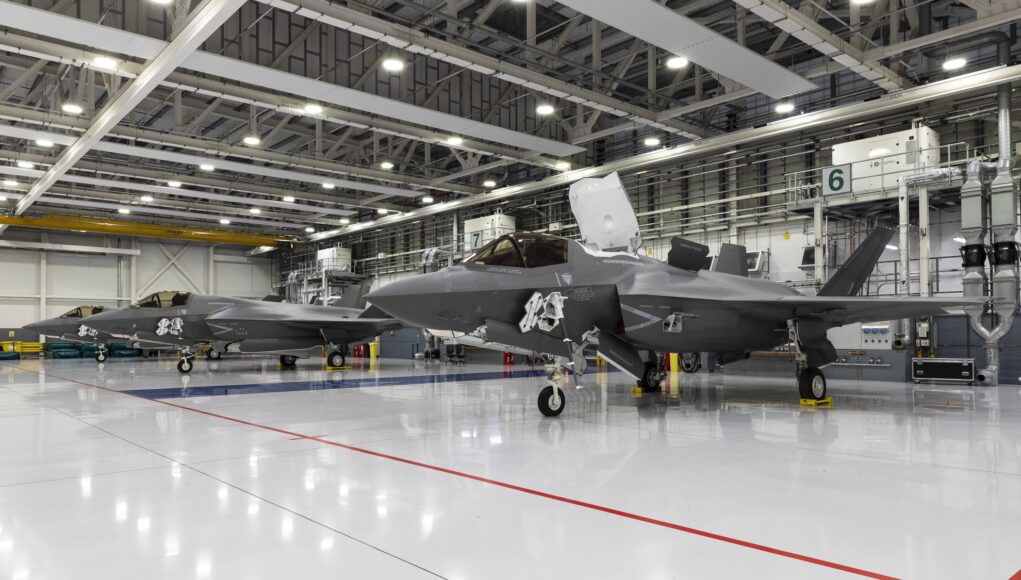



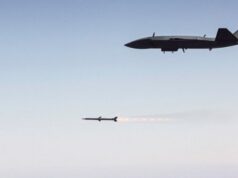
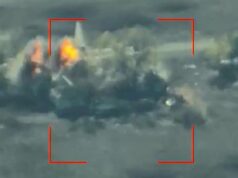
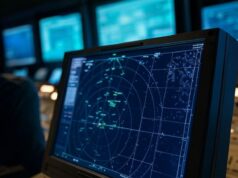
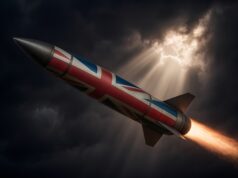




Might seem a silly qestion to some
But why is it called “tranche” rather than something like “Mk2 or 2nd edition”
Just a posh way to say part of something…
Well it’s not Mk2 as a tranche may (or may not) be the same Mk as the initial tranche, ie ‘group’ of aircraft, 2nd edition has a similar if slightly more nebulous meaning as Mk, though it does have a more time reliant aspect too I guess (because confusingly a Mk 2 Tempest was later than a Mk4), but certainly could be confused as such. I guess alternative names could be Lot or Cohort but I hate that second word. Tbh tranche seems to fit what they are perfectly and long used in this respect too, meaning effectively a group of something delivered later in time than the original ones.
Unfortunately tranche with Typhoon has become conflated with the spec in a way that it hasn’t with F-35. So you hear people talking about buying Typhoon tranche 4 or upgrading to tranche 3.
Batch?
Lot would be OK, tempest v👍
It’s from the French (another slice), in government, it’s a financial term.
Tranche in French means slice.. Un tranche de jambon.. a slice of ham. It’s not a financial term at all. Series, or order batch may be better terms in English.
UNE tranche de jambon . Tranche is a feminine noun .
And which has become an overused and annoying term by defence ministers in the west over the last 2 years.
Tranches dont have a difference in the aircraft it is just the way aircraft batches are named like how ships are done in batches
I thought we only had 3 test jets in the USA?
Yep, was going to mention that too.
I think there are three orange wired, but someone mentioned a few months ago that the oldest non-orange is also too expensive to upgrade for operation, so perhaps that Stateside too. I hear it’s possible the orange wiring might be being replaced soon. I don’t know if that means it’ll move from test to training or something else: they are still elderly.
There were two orange wired, third one wasn’t.
Ah. thanks for that.
Pre lot 8 have “issues”. Something to do with the tail falling off if you fly too fast.
One of the new build jets (I think it’s BK36/ZM170) was moved over to 17 Squadron at Edwards at the start of the year which would give 17squadron 4 airframes. I believe that more up to date aircraft with latest build systems are needed for the ongoing TR3 (tranche 4) which has stalled current production deliveries which would explain the move. The UK-owned planes from 17 sqdrn at Edwards are part of a general pool of aircraft for the test work going on in the US. Another F35B airframe there is useful for the TR3 work and hopefully means Meteor integration (and, who knows, Spear4?) is also proceeding.
An awfully long winded way of telling us all waht we already know. The interesting phrase is ” in service “. As the recent announcement was that a thirsd squadron would be available in 2033 presumably a good number of the above are going to be sat in hangers somewhere doing nothing. We could surely get three squadrons of eight or ten up and running int he next three or four years.
They’re not sat in hangars doing nothing, they’re being used for training or maintenance rotation. We actually have 3 squadrons (4 counting test aircraft) already, but 1 of those 3 is a training squadron.
I don’t know much about the RAF save, they used to taxi us to anywhere where we would be doing the fighting 😉, but 4 aircraft isn’t a squadron, is it? I thought 3 was a “flight” and 5 flights +1 spare aircraft was a squadron. Or has Whitehall reclassified a British squadron on another cost-cutting exercise?
The number of aircraft does not define a sqn. It could be 1 aircraft or 24. There are RAF sqns with zero aircraft assigned. Trails and research and development sqns for example.
Ta
Maybe yeah, but you know what he meant.
How big is a Russian squadron if they have squadrons..?
I can only guess, to be honest. I think they operate ‘Wings’ with X number of sqns assigned to a fighter wing. Numbers wise. Similar to us. Anything between 8 up to 24. They will only lie about numbers anyway. 😆
O.K. assume that’s true. We will ahve 47 (we hope) by the end of 2025. Two squadrons will be active. Currently 617 has eight aircraft frontline. If the second squadron forming by the end of 2025 also has eight that’s sixteen. We are told that the third sqd. will form by 2033, another nine years. Why? We currently have 107 Typhoons,each with 12 aircraft. Seven sqd is 84 plus an OCU of 23(?).
The question is., why can’t we have three sqd. of 10 F35 with the other 17 as test/OCU. The answer is that we can if we want to do it.
Because we won’t just have 8 jets on each sqn. It will be morw like 15. With aircraft in the sustainment fleet for maintenance and upgrade work. Ensuring the frontline has a guaranteed number of aircraft available at any one time. 👍
I would rather have three squadrons of eight or ten. There is no earthly reason not to do this. The benefit ,in my opinion, is that each squadron could build it’s own capability. Maybe one cold be dedicated to the RAF; two to the R.N. so thar two squadrons could operate together? Each could bolt on an OCU pair for advanced training? Numbers of airframes could be added as they became available but to do that we need to place orders.
They have very good reasons Geoff, otherwise they would do it. They operate as a whole force concept. The number of sqns doesn’t really matter. As aircraft are moved around the sqns as they are required. They are all multi role able to deliver the full range of capabilities that the aircraft can deliver. Be that from a carrier or on land based deployments. They go were air operations require them. It isn’t a battle between the RAF/RN. If the requirement is to put 12 jets on the carrier, then the whole force works together to achieve that. Whilst also able to continue with training requirements back at home. Be that new pilot’s going through the OCU, or newly qualified pilots working towards combat ready status on a,frontline unit. Plus a huge list of qualifications and currencies they have to stay in date for. A2A refueling for example. Night close formation flying. Working up with new mods for a up coming Red Flag. It’s all very complex.
I’m sorry Robert but we seem to be at an impasse again. No one is ever going to convince me that it takes 20 years to form three fighter squadrons. I’ve no great argument with what you say about sqd. numbers. I would just do it differently, that’s all.🙂
We know full well the reasons for the slow delivery. Blk4. which is a huge upgrade. And will be completed by 2029.I understand the slow delivery is frustrating. But we know when the next order is coming. (this summer for 27 jets) and more orders decided in 2025. This jet will be in service for another 40+ years. With huge development potential and capability. Blk4 will transform the aircraft with many 6th gen capabilities. We have never had an aircraft with this type of capability and potential.
The delay is here Robert. Australia,Israel, Japan, Netherlands,, Norway, South Korea all have at least two active squadrons (not trials or ocu’s…active) all on an order schedule similar to ours. More are on order. So far our order and delivery rate is one of the smallest and slowest and we now have to wait another nine years before the third squadron is formed? We dont even know whether Labour will honour the oreder for the next twenty seven. There is absolutely nothing to stop them cancelling, money earmarked or not.
You need OCUs to train so you can have frontline sqns. Pilots and engineers. Unless you rely on another nation doing it for you. And we both know how well that would go down in the comment’s section. Its a number of things. Manning, infrastructure at Marham, and slower delivery so not as many jets have to be sent back for blk4. Blk4 is more like a mid life upgrade, with many capabilitys classified. Its not a simple software drop. It setting the growth path for the next 40 years.
They are all training their own pilots as well Robert but once again you will not accept any criticism of the establishment. The countries I mentioned are all doing what we’re doing with the same difficulties accept that they are doing it quicker and more efficiently.
Ita not a case of criticism of the establishment. It’s understanding complex projects. We are regenerating carrier strike. Its not a simple business. And those countries getting F35A will have to send most of them back for blk4 upgrade.
F35s require more maintenance than typhoon, no point in setting up more squadrons if half the aircraft won’t be available due to maintenance, full planned strength for F35 squads is 12.
Also we currently have 137 Typhoons, the number of squadrons will probably drop when we ditch 30 next year.
The first paragraph basically agrees with my comments. They won’t be available. The second paragraph isn’t true. The T1 aircraft are not included as operational. We have 107.
Out of curiosity why aren’t they considered operational?
Most have already been removed from service under the RTP programme and have been or will be scrapped.
4 T1 jets are in the Falklands. And maybe 5-6 on the OCU. That’s it.The rest are in the sustainment fleet. Or already going through RTP. Striped for spares basically.
Not enough pilots 😬
The plan is to have 3 large sqns with at least 15 aircraft each, plus the OCU and OEU. You will than have the sustainment fleet ie aircraft in deep maintenance and upgrade. The support contract will guarantee X number of aircraft available to the frontline at at any given time. (FEAR) (Forces Extended Available Readiness) The Typhoon force works the same way. With high aircraft availability compared to past types, it means the same force output can match past aircraft types (Tornado for example) with fewer airframes. That’s the idea anyway within the limits of the available defence budget. The Tornado GR4 fleet from 2003 numbered around 140 something airframes, but could still only deploy 32 jets with an all out push. Typhoon could match that today with 100 aircraft in the forward fleet and with far better capability and survivability. There is some method among the madness Geoff. 👍 The future F35 force will be able to deploy 36 jets from a fleet of 74. Be that on a carrier or land based, or a split of both. It will be a very flexible and deadly force mix.
Good post mate.
Calm and collective 😆
Now carry on
👍
I apologise if this has been answered elsewhere but would it not make sense for the RAF to aquire F35A?
My understanding is its cheaper and better reflects the capability of the RAF and is easier and quicker to produce.
It is so annoying to see the RN having to air b n b our carriers to USMC
And the “intergration, interoprability and cross training ” or whatever term they use to describe the reason for there being more US servicemen and women on RN ships than UK folks because we cant fully man both carriers with our own ac (ok im half joking) And if we did use all our own ac we’d have no OCU or MU and still not have enough to man both to full compliment.
Isnt govt great
Good post. Thank you.
My argumnet as always Robert is timescale. If you wouldn’t mind scrolling to my reply to Hugo it’ll save me typing it all again.😉
Timescale is always an issue. Back in the year 2000, everyone cried because they wanted Typhoon capability yesterday. They had to wait a few more years for that. And the biggest issue is training people. It takes time.
I think he actually said the same thing six times
👍🙂
When were the first deliveries, around 2013 for the 3 test aircraft still in the US and a dribble of frontline airframes ever since.
They are talking about 74 by 2033. That’s 20 bloody years!!
Have to hope that Tempest will be a bit quicker!
I sincerely believe Tempest is a very expensive project that will not progress to a production aircraft. Would love to be proved wrong..
It’s not without its risks of course, but neither is it another TSR2.
The amount of money already stumped up and the success in making it a truly joint project with Japan and Italy are both very encouraging.
I genuinely think it’s born of a recognition that without it UK aerospace would be beholden to either minority work share on American projects or require partnering with France/Germany with all the associated risks and headaches.
Well its not another TSR2 yet – as we don’t have any being test flown or close to production.
I don’t believe it will get that far tbh…
Probably about 30 mph 😁😁
Ahh, the RAF, fitted for 138 F35’s…………………
Is this old news?
37 aircraft now delivered to the UK. 11 to go. Plus one W/O replacement whose order status is unclear.
4 aircraft with 17 Sqd in the USA (three very old plus a shiny new one), one lost, two TR-3 standard aircraft stuck at Forth Worth pending missing hardware parts and updated software, 30 in the UK at RAF Marham, including the latest two arrivals back in March.
Obviously a pool of 30 aircraft is still insufficient for the needs of the three squadrons based at Marham (2×12 + 1 x16 = 40, excluding aircraft in deep maintenance or being upgraded). With a couple of attrition reserves, about 50 are required.
Adding a third frontline squadron (12 a/c) by 2033 will also require at least 2 a/c being added to 207 Sqd. A total buy of 74 (+1) F-35B’s seems just sufficient to support this force level long-term. A further increase to a buy of 138 aircraft by the early 2040’s will at best mean only a fourth frontline squadron as the oldest aircraft (particularly the 17 delivered before 2020) will be obsolete and uneconomic to upgrade and keep in service. Essentially the later aircraft will be replacements for the early orders.
I have to agree that the order & delivery rate of about 1.5 a/c p.a. is pathetic, although 2025 should be a bumper year with at least six to be delivered, probably more given the current TR3 delays. The upside is that we aren’t facing as many expensive upgrades to early build aircraft as the USA, Australia and Israel.
Generally credible online accounts indicate Great Pumpkin is contemplating a newly revised battle plan: certification and release of a truncated version of TR-3 (hardware and especially the associated software) for training purposes only, followed by a combat capable version sometime in CY25. Revised plan necessitated by software instability revealed during flight test program, which requires reboot of subsystems while in flight. OMG, this plan is less than confidence inspiring in re to future upgrades (i.e Block 4 software). 😱 US HOR is seriously considering reducing planned purchases by 10 a/c and investing the delta in software development aids. Certainly not a rocket scientist, but believe the MIC collectively is losing/has lost control of software architecture. Know that a significant percentage of you Brits believe there is a diabolically Machiavellian plan to delay the integration of British weapons on F-35 to favor US contractors, but the both simple and yet truly frightening prospect may be that it is primarily attributable to an apparently insufficient level of technical and programmatic competency. Extremely concerned re what this track record may portend for B-21 and NGAD development programs. USAF simply can’t tolerate these programs becoming FUBAR. A serious recommendation for GCAP would be to recruit the Swedes (Saab), who have reportedly mastered the art of software partitioning, ASAP. Rant over, hopefully a complete misinterpretation of current events but honestly don’t believe it to be the case. 🤞🤔😳😱☹️
Am seriously beginning to wonder if LM will ever be able/or is capable of delivering BLK 4 by the end of this/any decade??
Which raises the question of ‘if they can’t, what is/or is there a plan B’ to facilitate integration of a broader spectrum of weapons?
Deep,
Have heard rumors carried upon the westerly winds re significant descoping and/or elongation of schedule for Block 4 software. 😱 If unable to reach the goalpost–move it, and declare victory. 😉 Doesn’t change reality, but may improve the morale of the uninformed. Again, hoping this reading of the tea leaves is incorrect. 🤞
Clarification: US HoR committee’s proposal to decrease FY25 purchases of all F-35 variants by 10 a/c is at this point a deferral, and not yet a permanent reduction in overall program quantities. Nevertheless, it would be reasonable for US MIC to interpret this action as a shot across the bow. Even the US Congress, w/ all irs real and perceived shortcomings, can be roused into action. Forewarned is forearmed, MIC, please take heed.
…its…🙄
I read that block 4 software works great in a lab, but becomes unstable flying in a real F35. This is why timelines have stretched out. They have got it working fine in a lab, so they make great announcements, only to have to backtrack, when it doesn’t work in flight.
How many years s does it take the janks to build something that don’t work??
Eventually US/Allied MIC will resolve most issues/deficiencies. 🤞 Software? Dunno. Remember an engineering prof once characterizing FM as F****** Magic. Perhaps that term will describe the ultimate solution. Believe the Greeks/Romans also had a term for this type of resolution in ancient plays, ‘Deus ex Machina.’ One can hope…🤞
Hmmm…we may need to coin a new term, perhaps when software meets the air, rather than when rubber meets the road. Believe the program requires the recruitment of some world class programming talent, would suggest headhunting trip to Carnegie-Mellon U. in Pittsburgh (PA, USA). Uncertain re UK, possibly Oxbridge?
I know there been an ever expanding list of requirements added into the F35 blocks. Block 4 has a big increase compared to the original specifications. What is actually causing the big delays I don’t fully know. Perhaps constant smaller upgrades may of worked better and hopefully aircraft systems getting designed/made now will be easier and cheaper to keep on cost and track.
A private, nightmarish vision is that because of the software architecture, whenever and however Block 4 is ultimately implemented and declared successful, absolutely no one will be willing/able to further upgrade the code. Only a private nightmare at this point, yet…🤔😳😱
I keep reading about our total aircraft minus 1 because it crashed or,had an accident. So ,my question is ……When are they actually intending to replace this ‘ lost ‘ aircraft, so we can just talk about what we’ve got ,without the follow on .
Probably in the 2nd tranche.
Thankyou .
Large government departments such as the MOD “self insure”. Theoretically the F-35B lost in 2021 should have been automatically replaced, like a written-off car. But it’s extremely high value and the sheer complexity of the ordering process has at best delayed this. It needs a PMQ to get some clarity as to the situation.
Great ,thankyou .
Large government departments such as the MOD “self insure”. Theoretically the F-35B lost in 2021 should have been automatically replaced, like a written-off car. But it’s extremely high value and the sheer complexity of the ordering process has at best delayed this. It needs a PMQ to get some clarity as to the situation.
The Tranche two order is for 27 aircraft. It was originally for 26 👍
Ok, thanks for that ,I wasn’t aware of the increased order .
👍
Sorry – duplicate post
Although the intention is to buy 138 eventually it doesn’t mean the RAF will have that many in service . The time frames involved will mean that some of the earlier purchases will be coming to the end of their service lives so I doubt very much if we will see more than the 72 in service at any one time . It’s all government smoke and mirrors I,m afraid .
Indeed that reality is the F35 is going to be in service as long as the carriers are in service. so at least a fifty year life…in that time the RAF and RN will have burnt through a lot of airframe hours and life…so I do expect in the end the Uk will order close to the 138…but it will probably order the rest close to the end of the f35s production run ( probably some time in 2040)..I would expect the tranche 2 order to be the last for a decade.
I think everyone should take a large dose of reality on the F35B. If for nothing else political considerations. There will be an election in July. It would seem a Labour led if not wholly regime will take power.
Speculation on my part is there will be a defence review. For review we all know that means cuts. One of the big ticket cuts I think will be anymore F35. The forty we end up with in 2025 / 2026 is our lot. Only one carrier at sea at anytime, possibly one carrier sold. Likewise what’s on order for the Navy is what they get. No new orders. 1st Tranche of Typhoons may go early. Decision on Typhoon replacement kicked down the road.
Unfortunately our system of democracy has cycle of less than a decade. Defence has cycles of half a century or more. For example Challenger tank. I first saw them on Salisbury plain in the mid eighties. It was the exercise to prove the concept worked and to accept it into service. I was there purely as an observer. It was like nothing I had seen before. There was a large group of civilians in the observer group who were all suppliers to the build. One of the lessons the army learned immediately was that the 432 could not keep up with challenger cross country. Also the blast plate skirts on challenger were Sheering of at high speeds cross country because of grounding. Which brings us to Challenger nearly entering service.
If we had more forward thinking on defence perhaps we could move to better long term plans instead of reactionary cuts.
So we can dream of squadrons, flotillas and armoured brigades, but in reality the nightmare of a defence review is around the corner.
There are reasons not to cut the future number of F-35s. Our industrial share vastly outweighs the proportion of planes we are buying and a further reduction could see pressure to move build to more enthusiastic countries. We effectively get our F-35s built for free, with the tax revenue from the global build significantly exceeding the cost of planes we buy. I’d hope the government wouldn’t want to mess up a good thing.
Of course there will be a review, but I don’t see too many big ticket cuts. More muddled thinking and black holes is my guess.
I’m not so sure we will see any big headline cuts from the defence review..infact I suspect there will be some positive headlines..like new frigate orders…I would suggest any headline cuts that conservatives could us as ammunition to rally around will be avoided…no one will want to be seen as the weak party on defence anymore…it’s starting to percolate into the general publics perception that the world is not as it should be…
As you say it’s speculation on our part not something either of us really know…all just a bit of fun speculation really until we get the review….but I honestly don’t think any party will get away with a cutting review…that fat went in the 1998 review, the 2010 review cut to the bone…and the peace dividend and any ideas that the end of history and last man was based in reality has been destroyed by a European war, threats of nuclear exchange and china saying it will go to war.
But to my mind the way the world is going, the need for massive levels of conventional deterrence by the west..means that any review that is not recommending..significant uplift in the army, navy and airforce will be a bad review…so I know I will be unhappy with it…I just don’t think it will be a cutting review.
The ammunition you say that the conservatives would receive are in effect blanks. Realistically Starmer will have a huge majority and can do as he wishes comfortably for three years then he may start to look at the political weather. In those first three years defence will be a low priority.
I maybe wrong but my predictions are as I said. No more 35s, one carrier parked if not sold. LPD to limp along much as Fearless and Intrepid did.
Only one operational at a time. No new surface vessels past current orders.
Even to maintain that a huge increase in the MOD budget will be required. The staged payments for the new SSBN start to get big real soon.
There will be a review and 1 carrier will be going for a refit and the carriers will begin to operate as intended with one available. Both LPD are not in service so one being brought back would be an improvement.
The current government seem to be committing to a lot of projects recently that don’t require any investment just now. The review needs to look at that and decide what is actually needed.
The current government have cut defence spending from £57billion in 2009 (using 2023 value) down to a low of £46b only recently climbing to £54b and now back to £51b.
While we may not see any large increases instantly I’m hopeful the review will actually set defence on a decent path instead of the slice reviews of the past.
Guess we just have to wait.
The last we had from Shapps I believe was that one LPD was to be brought back into service. I also thought I saw a headline on here the other day that both LPD were back in the melting pot. I personally think that is their next destination, it always was going to be thus. The future projects you mention are pies in the sky in my mind.
For me ships on order will be built. No more F35. Typhoons to soldier on but Tranche one withdrawal brought forward. I see no big ticket items being purchased beyond what is already contracted for. Dreadnoughts will be safe. Beyond that I see a Dim future. I think the politicians of all flavours have left us in a potential pervious position. Much of the men and materials required are on the radar of contributors on here. Unfortunately that counts for nothing. There are lots of infrastructure and items that should be in advanced planning if not being ordered. Nobody is looking at them, for instance the Points are becoming elderly. The last Astute is about to enter service. What will replace them. Lead in times for these things is way beyond the life of a Government. There is no mileage or browny points for Starmer to spend cash on something his tenure will never see.
47 F35b lightnings to replace 74 harriers, 137 tornado GR4 that were in service in 2009. Not including the 50 odd sea harriers and squadron of jaguars, The typhoons were meant to replace the F3s but have taken up ground attack now.
We can dream of the days when 238 typhoons and 138 F35B were to be the future of the airforce. People even moaned then the numbers were a bit light.
another interesting thing I found was the Pensions bill in 2009 was £3.4 billion. That was then added into the MOD budget in 2010.
Obviously not enough but I would point out were getting 74 F35s
I recall the Jaguars went way before then mate, we had 6,41,54 Sqns and 16R Sqn. All cut in the 2004 SDSR New Chapter.
But yes, point still stands.
Yeah I couldn’t remember if there ever was a replacement for the jaguar but thought I would throw it in anyway.
I was looking through defence budget in today’s money and it went from £57 billion in 2009 down to £47 billion Over the next several years and is not even back to the £52 billion in 2023.
Add in the creative accounting and it makes complete sense why the forces keep getting smaller.
Hi mate. Sea Harrier went in 2006, and we had less than 28 In service. 16 over the two frontline sqns 800 & 801. GR7/9 was 48 in service max. The final Jag sqn went in 2006. 232 was the Typhoon original number. We got 159 in the end. The final F3 went in 2011. And we all miss those aircraft types and the numbers and sqn’s. Bur today’s force, is way more capable than anything we could deploy back then.
How many arrived this time? How many refuelling took place. Supported by Voyager?
Why do we still need planes in the US?